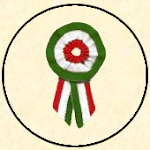"A harc az élet fűszere"
(A Timur török eredetű férfinév, jelentése: vas. Timur Lenk, 14. századi ázsiai fejedelem és hódító nevéből vált ismertté. Szintén a török, ótörök vas szóból ered a Tomor, Tömör név is.)
Timur kegyetlen és vérszomjas hódítónak mutatkozott (kedvenc mondása: "A harc az élet fűszere"), béke idején azonban jámbor uralkodó, bölcs törvényhozó, igazságos bíró, a művészet és tudomány pártolója, oltalmazója volt. Legmaradandóbb emlékének szamarkandi azúrkék, türkiz, arany és alabástromszínű mozaikokkal díszített műemlékegyüttese bizonyult. Ennek leglenyűgözőbb eleme a hatalmas nagymecset, amit ugyan részben lerombolt egy földrengés, de kupolájának egy óriási darabja máig áll. Timur Lenk mauzóleuma az iszlám művészet egyik remeke. Amikor 1941-ben a Szovjet Régészeti Bizottság kutatói fölnyitották a fél évezredig háborítatlan sírt, egy jobb lábára és karjára egyaránt béna, de erős alkatú és viszonylag magas férfi csontvázára bukkantak.
http://hu.wikipedia.org/wiki/Timur_Lenk
Néhány kép és link
Some link and pictures on Timur - Tamerlane The Great
Historical notes on Samarkand and Timur - Tamerlane
http://rolfgross.dreamhosters.com/Samarkand-Web/History.htm
Samarkand and Shahr-i-Zabz
http://rolfgross.dreamhosters.com/Samarkand-Web/Pictures-Text.htm
Clavijo' Embassy to Tamerlane
http://depts.washington.edu/silkroad/texts/clavijo/cltxt1.html









Timur Urgandzs várát ostromolja
(Šaraf ad-Din ‘Ali Yazdi - Úafarnâme, 1470 körül, Herát)

Timur giving orders to the General Assembly
for a campaign against Georgia, whilst receiving
Mutahartan, Emir of Erzinjan in Armenia
Illustrated Folio from the Zafarnama of
Sharaf Al-Din 'Ali Yazdi
Mughal India, circa 1595 - 1600 A.D.

The Defeat by Timur of the Sultan of Delhi, Nasir Al-Din Mahmum Tughluq,
in the winter of 1397 - 98 A.D.
Illustrated Folio from the Zafarnama of Sharaf Al-Din 'Ali Yazdi
Mughal India, circa 1595 - 1600 A.D.


REMBRANDT HARMENSZ. VAN RIJN
/ LOUVRE / BRIDGEMAN ART LIBRARY
In 1400, at the age of 67 or 68, Ibn Khaldun was compelled by the Mamluk sultan al-Nasir to travel to Damascus in an effort to convince the Turco-Mongol conqueror Timur to spare the city. But the talks failed, and Damascus was mercilessly attacked.

Battleground of Timur and Egyptian King,
conserved in Golestan Palace, Tehran, Iran (1515)



The flowers of Timur
The Great Timur Empire (Büyük Timur İmparatorluğu)
Alleged flag of the Great Timur Empire - Image by Ivan Sache, 4 July 2004
Official description: Founded by Timur Gurgani bordering the Balkans in the West, the Volga in the North, Indian Ocean in the South and Central Asia in the East
Additional information: Quoting R.F. Tapsell, Monarchs, Rulers, Dynasties and Kingdoms of the World, 1983:
Timurids: Barlas Turkish family founded by Timur (Tamerlane), who rose to power in the mid-XIVth century in Transoxiana and spent his long reign in far-ranging and immensely destructive campaigns, overrunning Iran, Iraq, Asia Minor and the domain of the Golden Horde in Southern Russia. He sacked Delhi in 1398 and temporarily broke the power of the Ottoman Turks at Ankara in 1402. On his death his large empire in Iran and Transoxiana became divided among his descendants and shrank rapidly over the XVth century amid family quarrels. The last minor prince of the dynasty, Babür, was expelled from Farghana by the Shaibanids, conquerors of Transoxiana, and established himself at Kabul. In 1526, he defeated and killed the Lodi sultan of Delhi, becoming master of northern India and founding the Moghul empire.
Recent studies have shown that this Empire was a Mongol state but official Turkish sources still consider it as Turk.
Flag: The alleged flag of the Great Timur Empire is blue with three white disks placed 1 + 2 in the middle of the flag.Ivan Sache, Jarig Bakker & Onur Özgün, 4 July 2004
Other reported flag of the Great Timur Empire - Image by Jarig Bakker, 15 July 2003
In Flags of the World 1669-1670, edited by Kl. Sierksma, 1966 [sie66] is a flag on p. 271 with caption "TAMERLANE". This particular flag nowhere has its counterpart. It is not to be found in the Sketchbook, a Napolitan manuscript from c. 1666&.
Nevertheless it can almost certainly be defined as the flag of the empire of Tamerlane, inasmuch as we read in Cleirac (pages 67 and 68) [cle47]:
Tamerlan, le fléau de l'Asie, souloit arborer ses pavillons de trois diverses couleurs, de blanc, de rouge & de noir, couleurs de paix, de sang, & de mort.
which translates in English as:
Tamerlan, the scourge of Asia, wanted (? provided souloit is indeed vouloit, the ancient form of voulait) to hoist his three-coloured ensigns, white, red and black, colours of peace, blood and death.
The full source is: Cleirac, Estienne: Explication des termes de marine employés dans les dicts, ordonances et réglemens de l'admirat ... Jacques Mongiron Millanges, Bordeaux, 1647. -4to, First edition 1636.
I suppose that Cleirac based his remarks on the travel-book of Ruy Gonzalez de Clavijo, who travelled to the court of Timur 1403-1406, and wrote the Historia del gran Tamurlan e itinerario, which appeared in the Hakluyt series in English translation in 1859 (1st series, no. 26).







.png)

















































































































![[The Great Timur Empire]](http://www.fahnenversand.de/fotw/images/t/tr%21timur.gif)
![[Other reported Tamerlane's flag]](http://www.fahnenversand.de/fotw/images/t/tr_timur.gif)

Nincsenek megjegyzések:
Megjegyzés küldése